11 Amazing Things to Do in Haleakalā National Park
Rising 10,023 feet above sea level, Haleakalā is the world’s largest dormant volcano, the centerpiece of Maui’s Haleakalā National Park.
This is a shield volcano, created by the gradual addition of countless layers of lava, the largest part of which actually lies under the water’s surface. In fact, when measured from the ocean floor to its summit, Haleakalā is the third-highest mountain on Earth.
There are many things that distinguish this park from all other U.S. national parks. Haleakalā Volcano’s enormous size is obviously one of them, but there are numerous other Haleakalā National Park attractions, too.
As you’ll discover in this article, the things to do at Haleakalā National Park range from sunrise watching to stargazing to bird viewing. Camping, hiking and swimming are popular activities as well.
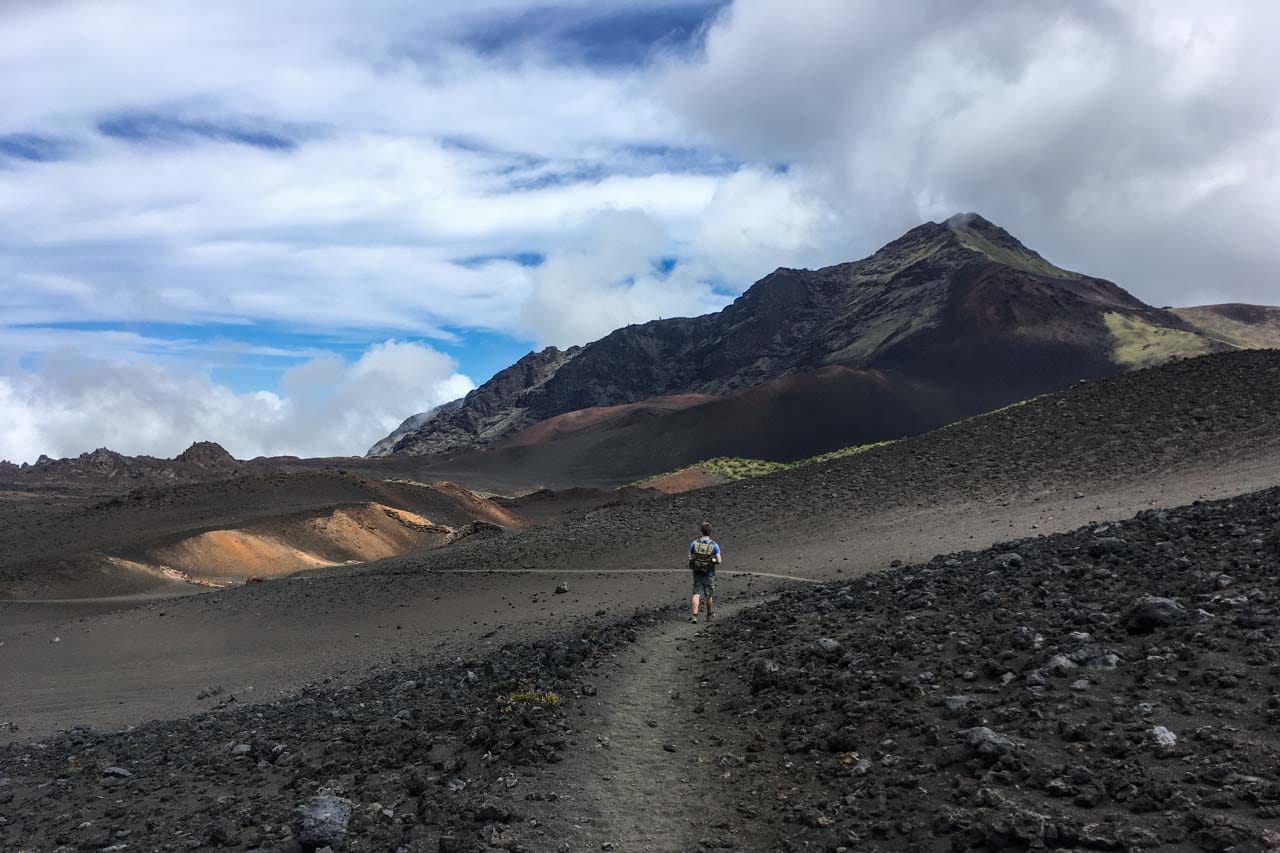
This blog post about the best things to do in Haleakalā National Park contains affiliate links. You can read more about our Terms of Use / Disclosure here.
10+ Things to Do in Haleakalā National Park, Maui, Hawaii
One of several volcanic national parks in the U.S., and one of the two national parks in Hawaii, Haleakalā National Park consists of two entirely different districts.
The Summit District is its most visited area, particularly due to the ever-growing popularity of watching the sunrise at the Haleakalā crater. This is where you can go for Haleakalā crater hikes and enjoy spectacular views.
The Kīpahulu District, on the other hand, lies at the ocean on the mountain’s east side. This area couldn’t possibly be more different from the summit. Featuring lush rain forest scenery, waterfalls and natural pools, it’s a great place for short walks and swimming.
I’ve listed the things to do at Haleakalā National Park by district. This should make it a lot easier for you to figure out what to do in Haleakalā National Park in each area.
Note, though, that I really recommend visiting both areas of the park. They complement each other wonderfully and provide the ultimate, authentic Hawaii experience—a volcano and highlands combined with rain forest and coast.
What to Do at the Haleakalā Summit District
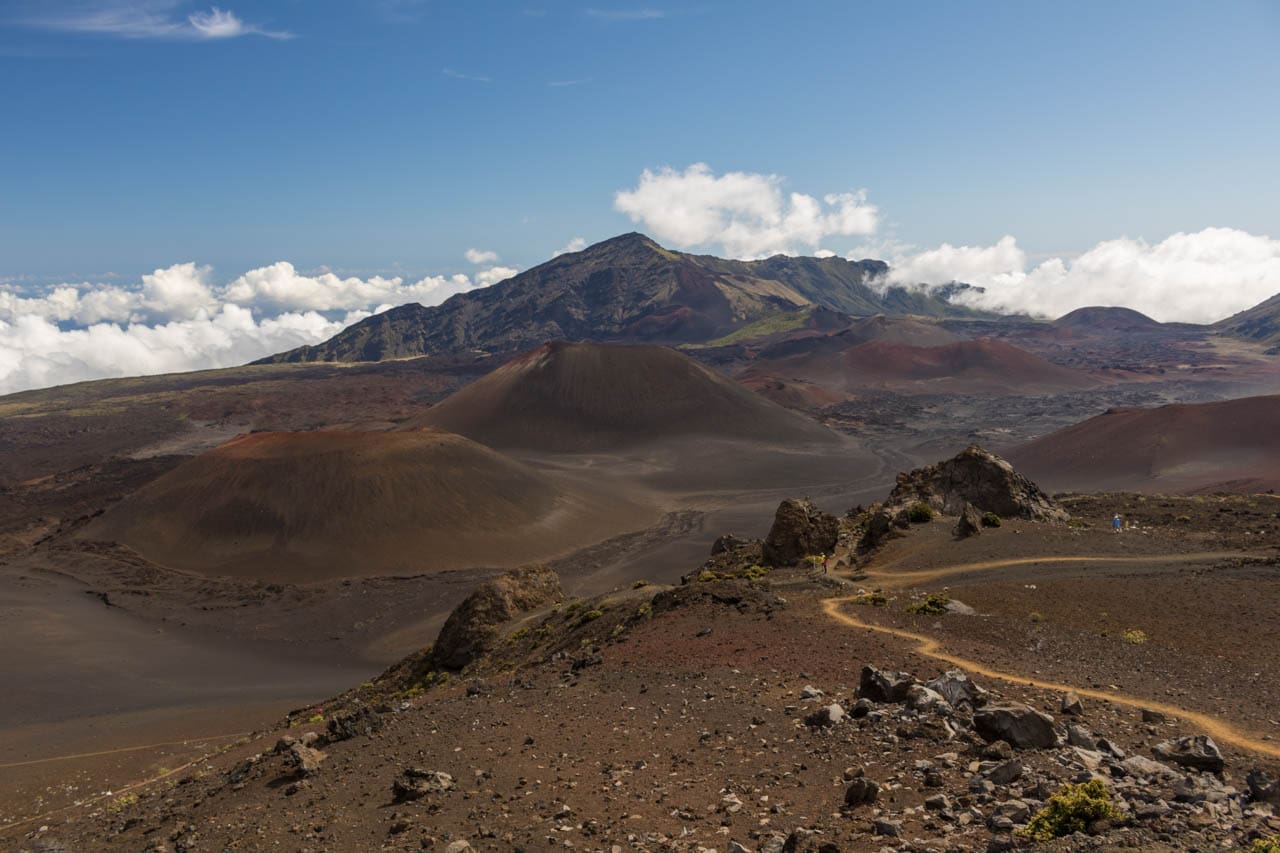
The Haleakalā Summit District encompasses the top of the Haleakalā Volcano. There are several fun Haleakalā Summit activities to choose from. You can do all of those listed below in just one long day, from sunrise to nightfall.
There’s one road up to the summit, a winding and sometimes steep 37-mile ascent from the beaches near Kahului to the top of Maui.
Climbing more than 10,000 feet in only 37 miles (or 3,048 meters in 59.5 kilometers) actually makes this a unique road in the world. No other road rises that much in such a short distance.
Once you’re inside the park, which protects the entire summit area, including the Haleakalā crater as well as native shrublands and patches of non-native forest, these are the top things to do in Haleakalā National Park’s Summit District.
Note: Because of this high altitude, it can get pretty cold near the Haleakalā Summit. Temperatures regularly drop down to around freezing overnight.
Additionally, the Haleakalā Summit weather is notoriously unpredictable. Mist and clouds are very common, while there’s no lack of daytime sunshine and clear night skies either.
So, come prepared if you’re planning on camping, watching the Haleakalā crater sunrise and/or doing some stargazing. Bring both warm clothes, rain gear and sunscreen (you get sunburned faster due to the high elevation).
Watch the Haleakalā Summit Sunrise and/or Sunset
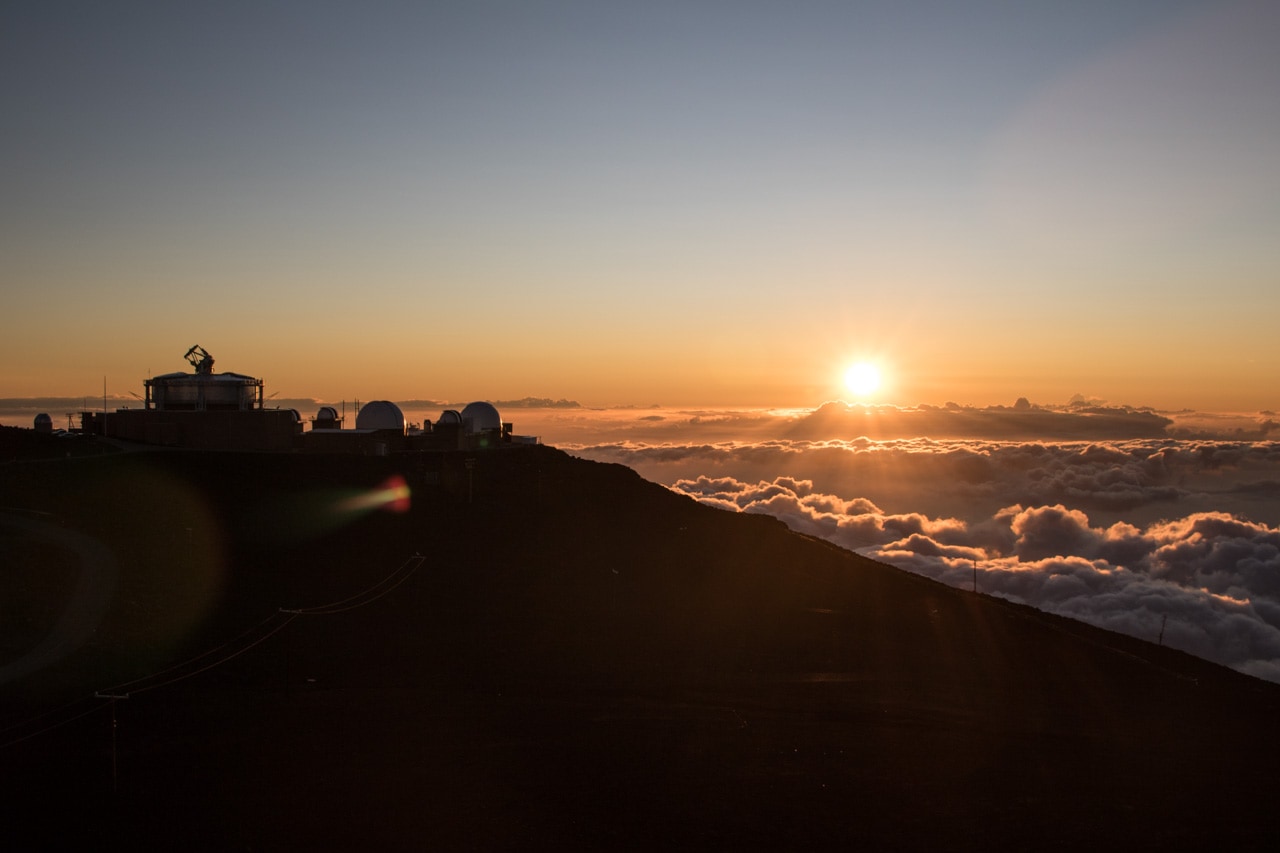
One of the absolute highlights of Haleakalā National Park is watching the sunrise at the Haleakala crater.
Shivering in the late-night cold, you’ll share this experience with hundreds of other visitors.
Watching the Haleakalā National Park sunrise has become so extremely popular in recent year that the National Park Service now requires you to make Haleakalā sunrise reservations.
You can find out more about this on the NPS website.
Alternatively, if you aren’t able to get a reservation, enjoying a Haleakalā crater sunset is a nice option, too. This doesn’t require any reservation or additional fee.
Popular areas to watch the sunset at Haleakalā are the Haleakalā Summit and the Haleakalā Visitor Center. Often, you’re above the clouds, which makes the sunset experience more remarkable here than elsewhere.
Visit the Park Headquarters and Haleakalā Visitor Center
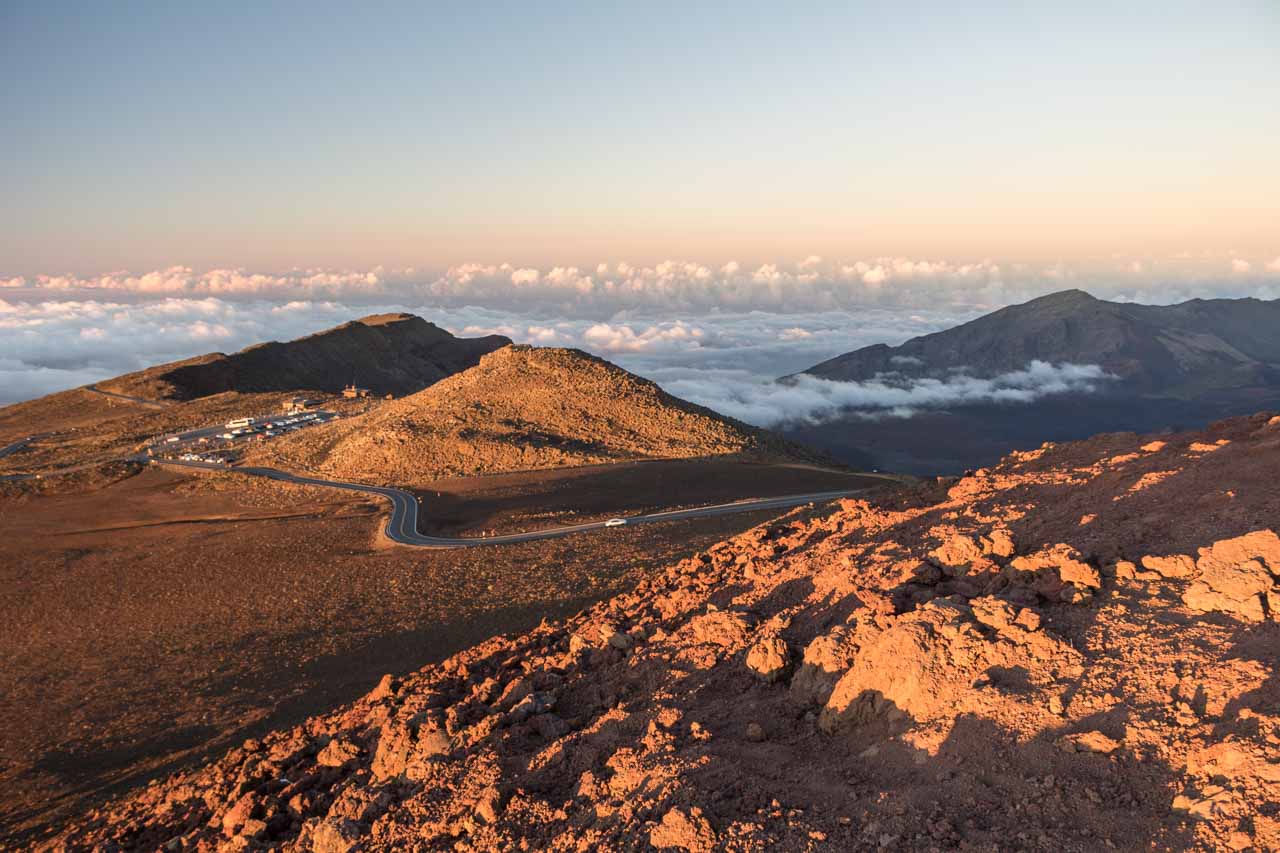
I always recommend visiting the (or a) visitor center during any national park visit. At Haleakalā, too, I encourage you to swing by the Park Headquarters Visitor Center, located a short distance beyond the entrance booth.
It’s open every day from 8 a.m. to 4 p.m. and has cultural and natural exhibits, restrooms, drinking water, an information desk and a bookstore.
There’s also the Haleakalā Visitor Center further up the road, near the summit. This facility has restrooms, exhibits, a small shop, drinking water, as well as trail access. This visitor center is open from sunrise to noon.
Go Bird Watching at Hosmer Grove
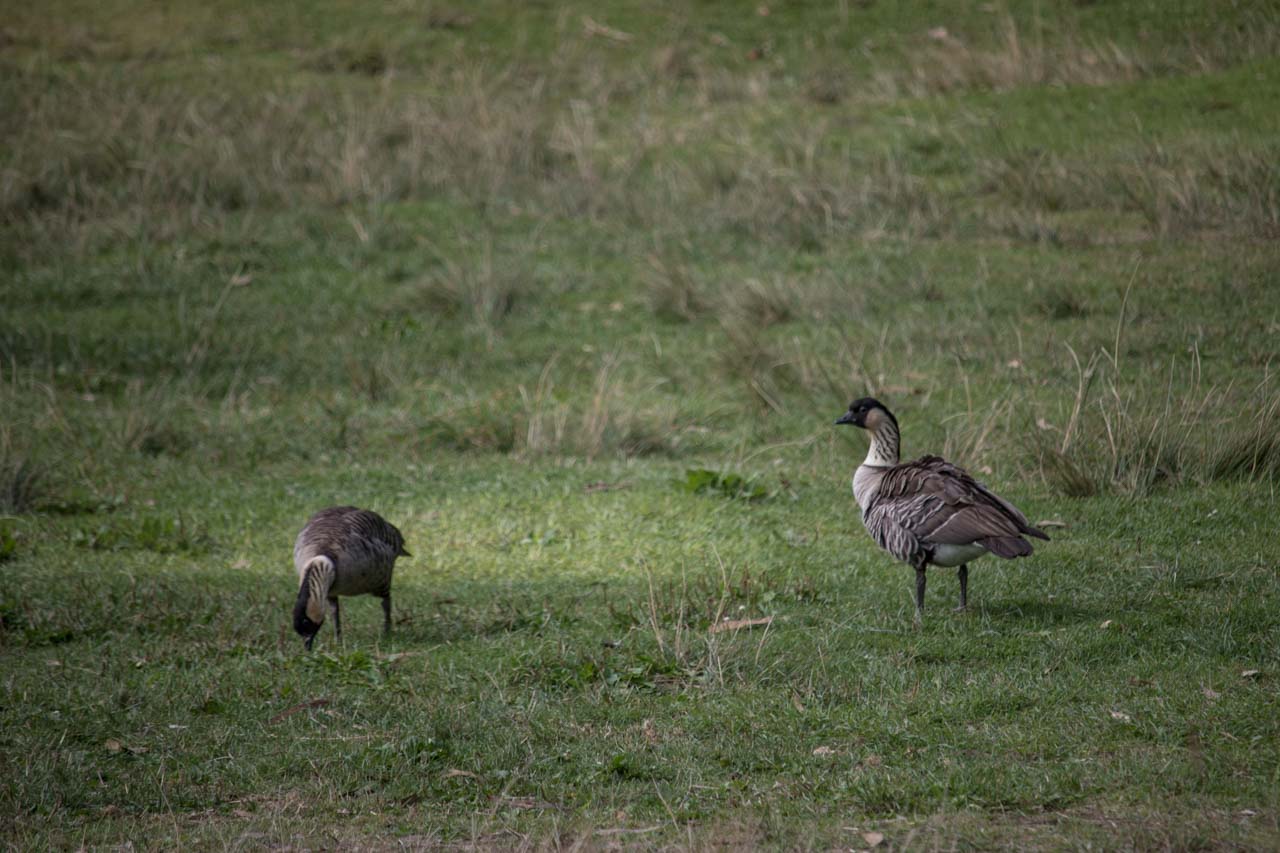
Haleakalā National Park is one of the best national parks for bird watching. It’s home to the native nene, which is a Hawaiian goose, and the ‘ua’u, a Hawaiian petrel, but also a variety of colorful honeycreepers.
While nene can be seen all over the summit area, it’s Hosmer Grove that harbors the greatest variety of birds.
The wonderful 0.5-mile Hosmer Grove Loop Trail runs through a non-native forest and native shrublands on the higher slopes of the volcano and is a great place to see honeycreepers found nowhere else on Earth. It starts at the Hosmer Grove Campground.
See Haleakalā Silverswords
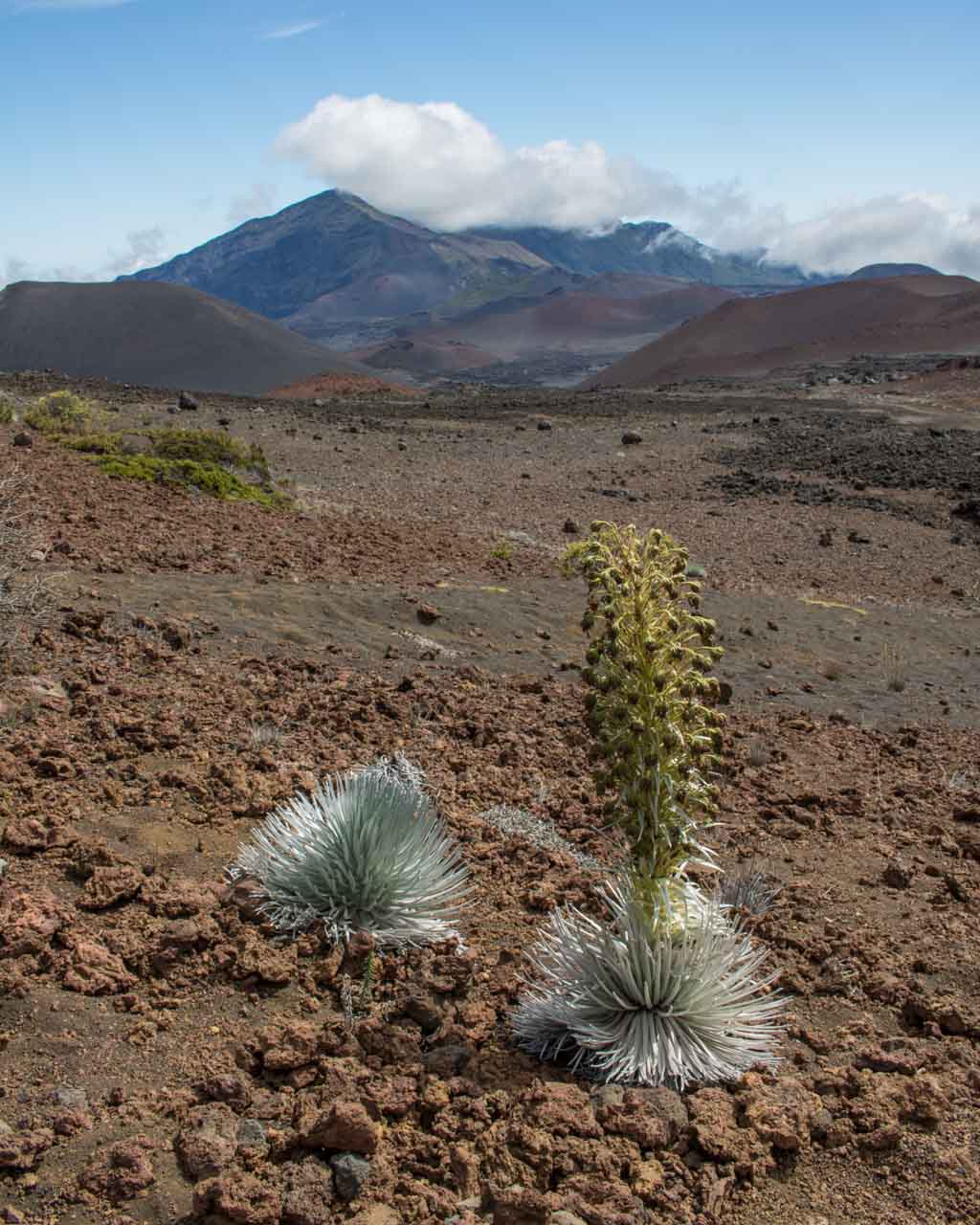
Walking in the Haleakalā crater feels like an otherworldly experience, which is only enhanced by the presence of the Haleakalā silverswords (‘ahinahina), an extraordinary plant with fleshy silver-colored leaves that radiate out in a rosette-like form.
A surprising member of the daisy family, this delicate and vulnerable plant blooms only once in its life, which can last up to 90 years, after which it quickly dies.
You can see lots of these amazing plants along trail inside the crater, particularly on the Sliding Sands Trail.
Hike the Sliding Sands Trail to Pele’s Paint Pot
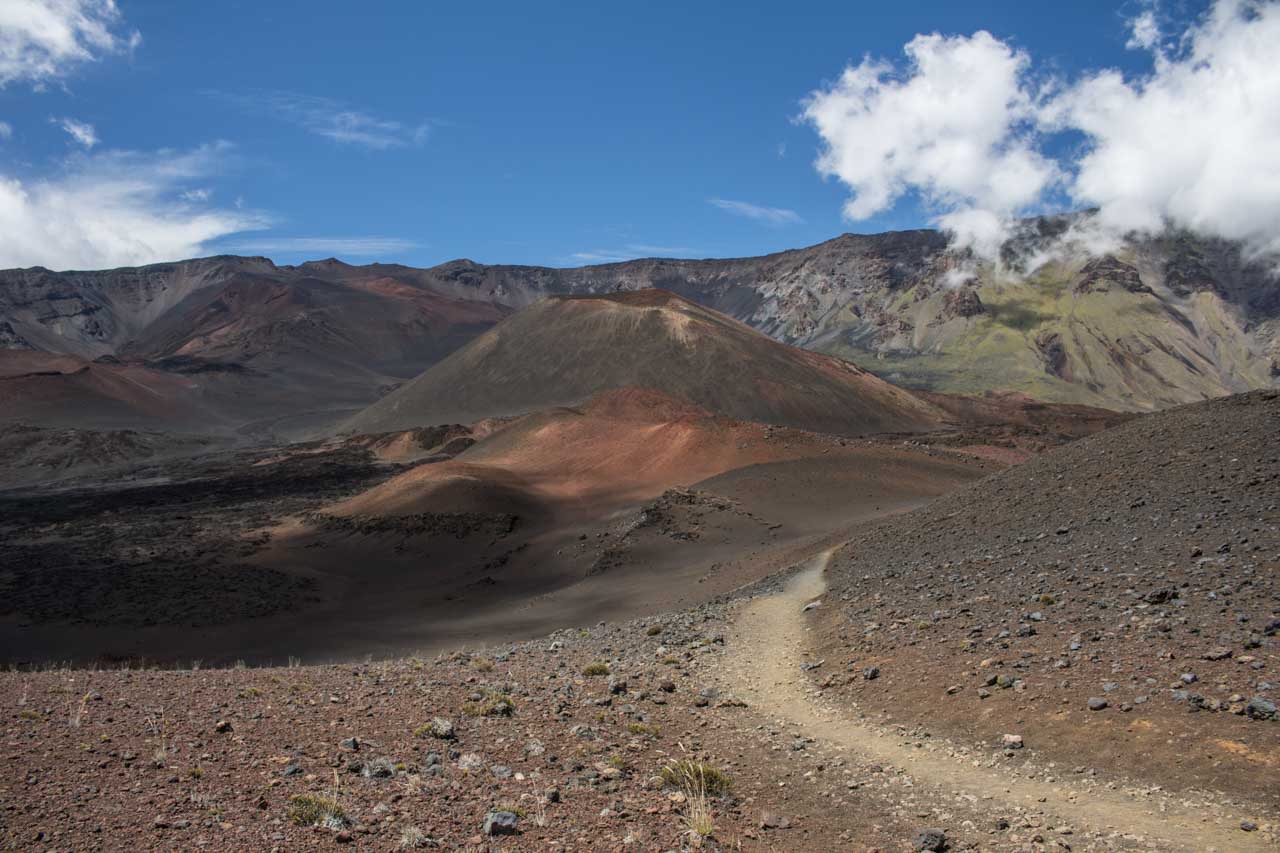
Also known as the Keonehe’ehe’e Trail, the Sliding Sands Trail makes for one of the best Haleakalā National Park hikes. If you’re looking for a long and challenging day hike deep into the crater, this is the trail for you.
Starting at the Haleakalā Visitor Center parking lot, the trail switchbacks down into the Haleakala crater. It’s 3.9 miles to the crater floor, while the elevation change is almost 2,500 feet.
The ultimate destination of this hike is an area unofficially called Pele’s Paint Pot. Situated near the north slope of the Halali’i cinder cone, it’s famous for its amazingly bright colors. Pele’s Paint Pot is roughly 5.7 miles from the trailhead.
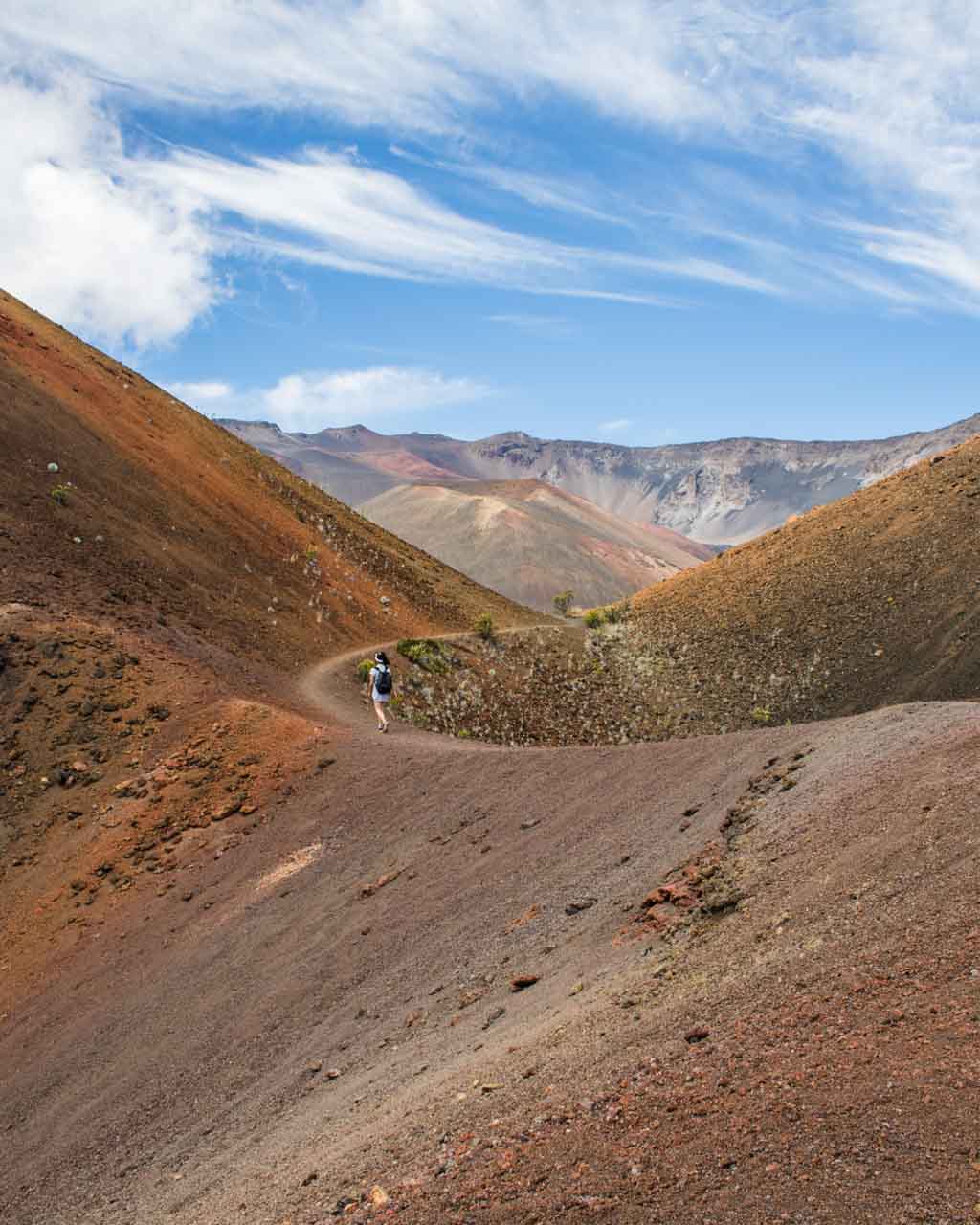
Retrace your steps back up to the crater rim. The total distance of this phenomenal day hike is about 11.5 miles. Note, however, that the hard part is the return trip. It’s a long climb back—count on at least twice as much time for the way up as for the way down.
Additionally, take my advice and put on a lot of sunscreen. The crater has a high elevation and the sun is capable of giving you a serious burn if you don’t protect yourself.
Also, carry plenty of water and snacks. This is a long day hike in the alpine desert wilderness and there are no facilities along the way. Count on 6-7 hours for the entire hike.
Alternative Haleakalā crater hike: It’s also possible to start a day hike at the Sliding Sands Trailhead, hike past Pele’s Paint Pot and continue to Halemau’u.
This hike is about 11 miles long, but instead of a there-and-back hike like the Sliding Sands Trail above, it’s a one-way journey across the Haleakala crater floor.
Note that there’s no shuttle service in the park, though. To get back to your starting point, you can use the designated “hiker pick-up” area at Halemau’u and hitchhike back.
Stargaze near Haleakalā Observatory
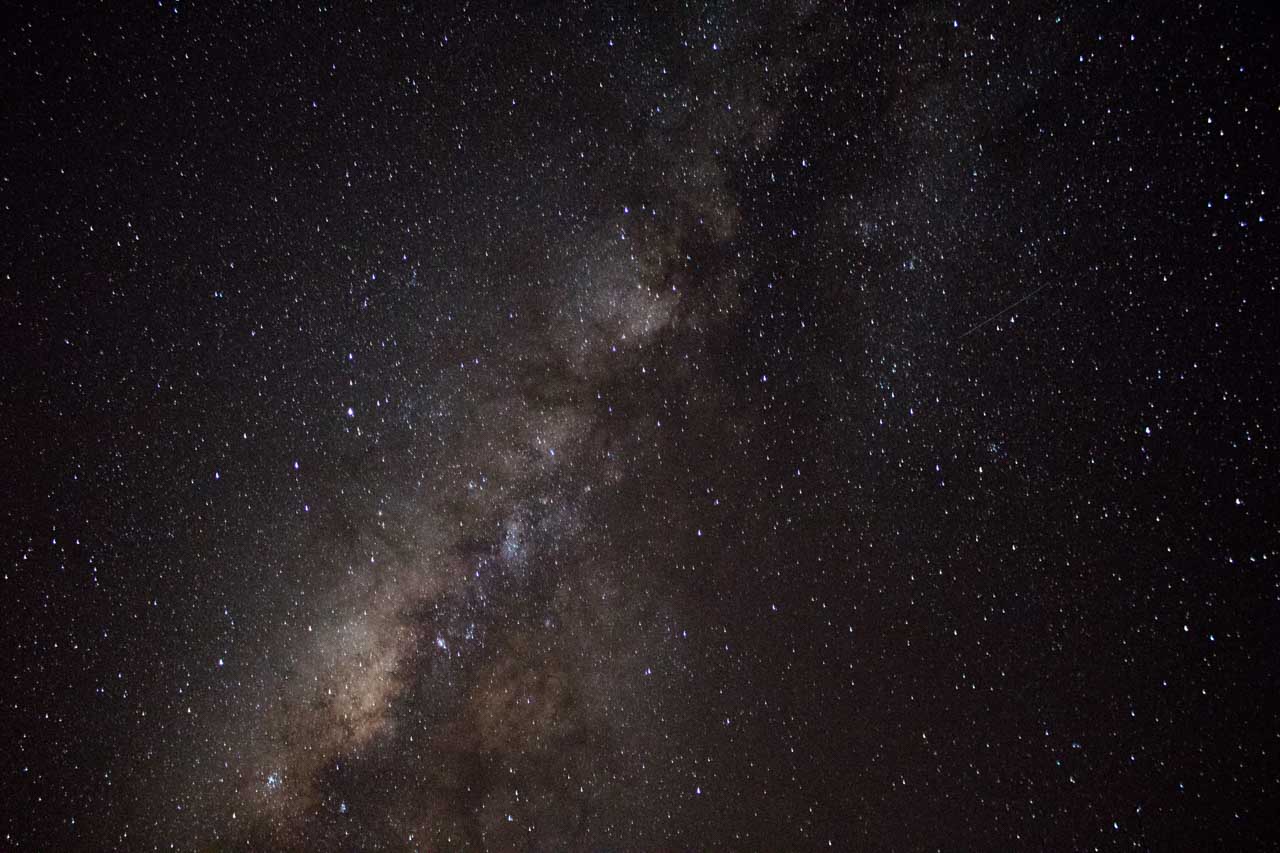
Both a Haleakalā National Park sunset and sunrise can be spectacular, but there’s an entire other aspect of this park, too.
Thanks to its high elevation of 10,023 feet, lack of light and other pollution, and typically clear skies, the Haleakalā Summit is one of the world’s best stargazing locations.
So, stick around after sunset and take in one of the most majestic night sky views you’ll ever see.
What to Do at the Haleakalā Kīpahulu District
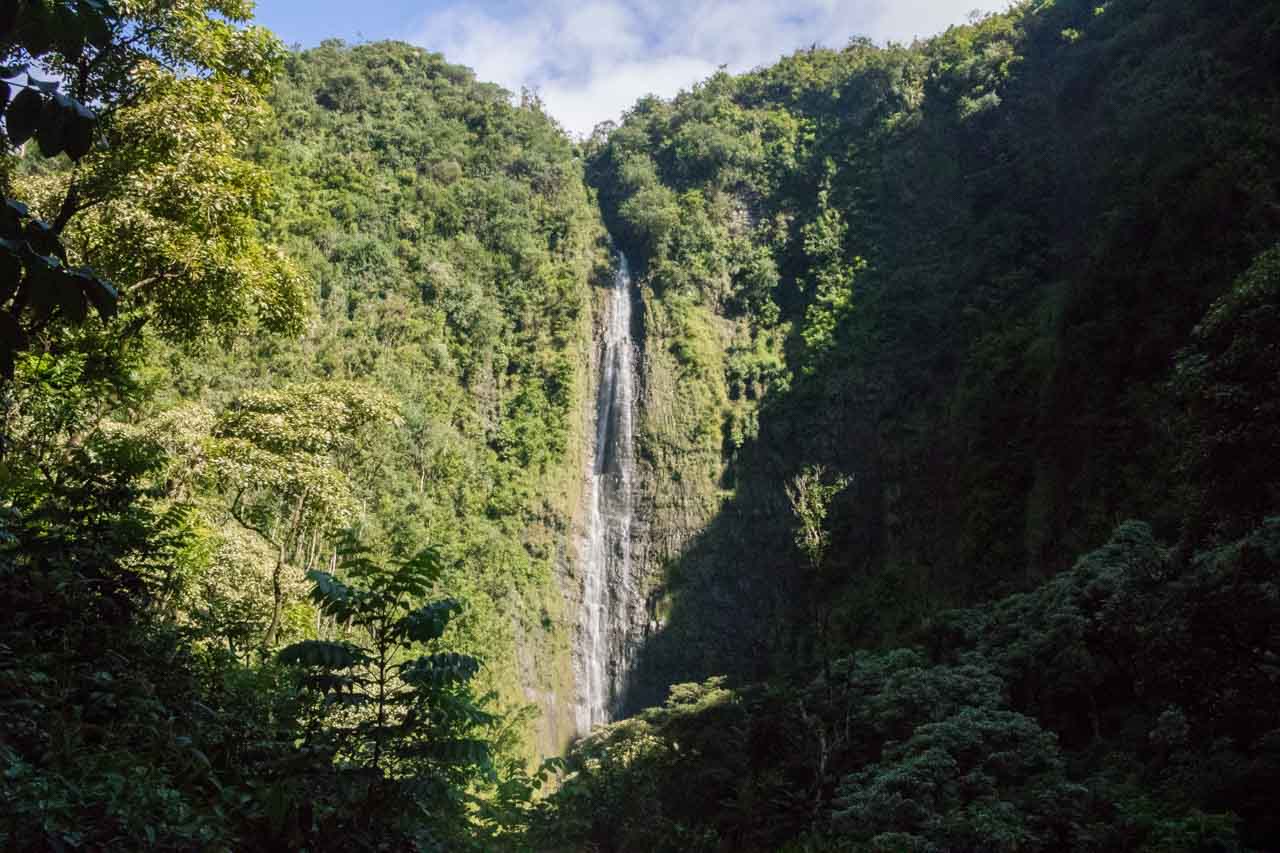
The remote Kīpahulu District occupies an area on the lower eastern slope of the Haleakala Volcano. At this site of an ancient Hawaiian village, you’ll find spectacular waterfalls, rain forest scenery, an amazing bamboo forest and stunning coastal views.
Kīpahulu lies past the town of Hana, which is only accessible to 2WD vehicles via the world-famous Road to Hana. This almost-impossibly winding jungle road is an absolute thrill ride.
It’s a memorable experience all on its own, which is why I’ve included it below as one of the best Haleakalā National Park activities.
Even though it’s not within the national park, it is the only way to get to its Kīpahulu District.
Note: In contrast with the often-chilly summit, the Kīpahulu District is hot and humid. Its location on the mountain’s east side means regular rain showers and constantly high humidity levels. Bring rain gear, bug spray and sunscreen.
See the Pools of ‘Ohe’o Gulch

Sometimes also called the Seven Sacred Pools, the Pools of ‘Ohe’o Gulch are a place that couldn’t possibly come closer to heaven on Earth.
Featuring a series of palm tree-flanked waterfalls and natural pools, it’s a scene as paradisiacal as it gets. If you’re wondering what to see in Haleakalā National Park, this is definitely one of the top places.
You can get there via the short and scenic Kuloa Point Loop Trail, which starts at the Kīpahulu Visitor Center.
Remember that the pools and their surroundings are subject to flash floods, land slides and rough ocean surf. The National Park Service discourages swimming here, but it’s not illegal if the access gate toward the pools is open.
Whatever you do, be careful. If no heavy rainfall is imminent, taking a dip should be fine. Do obey all warnings and rules, though!
Hike the Pipiwai Trail
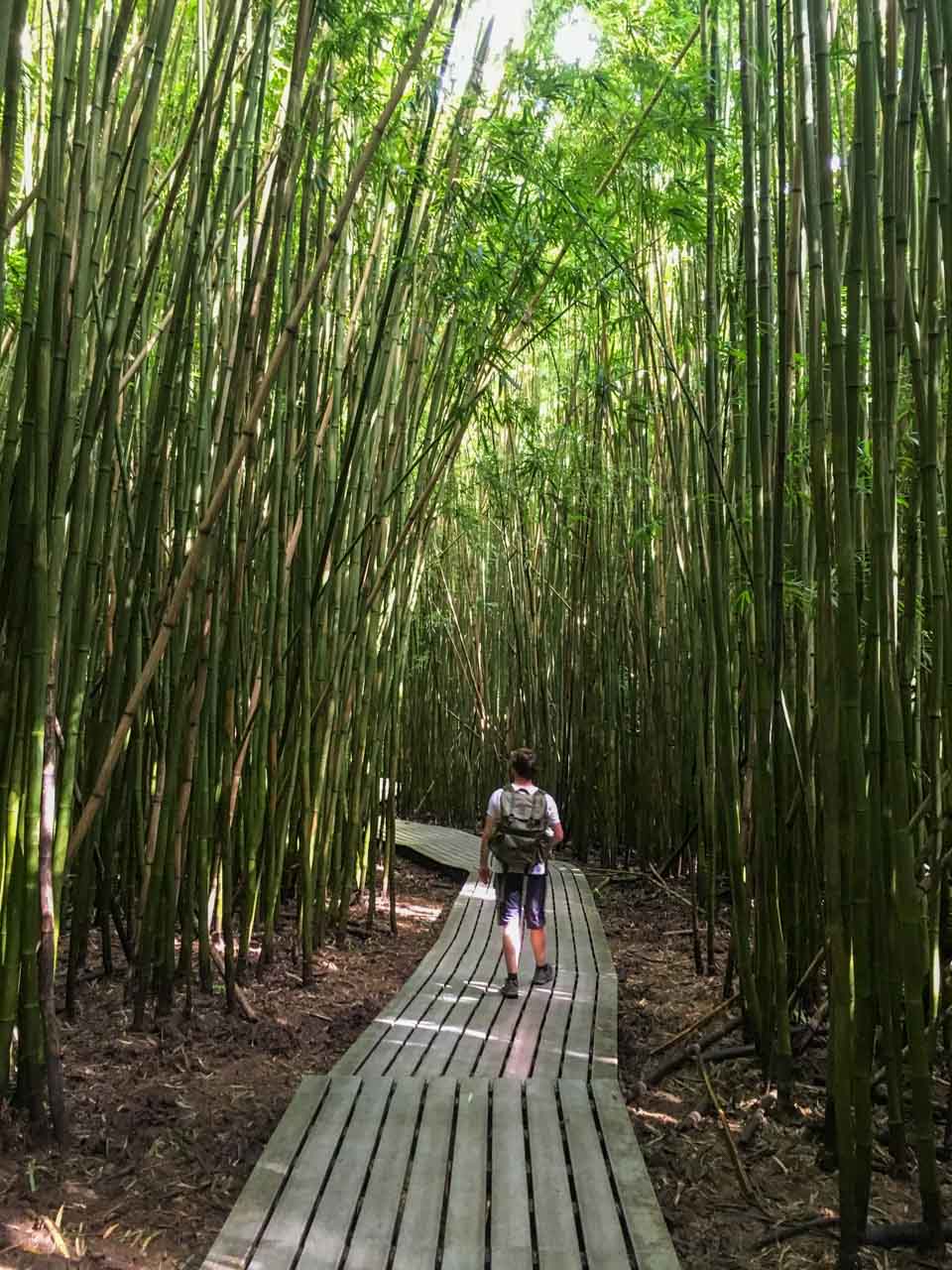
As far as things to do in Haleakalā National Park’s Kīpahulu District go, I’d say that this is the number one activity. It’s the longest hiking trail in the area, and the one with the most variety.
Also starting at the Kīpahulu Visitor Center, it meanders for 2 miles through a lush and very humid rain forest, past an overlook or two, and through a stunning bamboo forest.
The ultimate destination on this fun Haleakalā hike is Waimoku Falls, a beautiful waterfall that drops 400 feet down a sheer cliff.
The roundtrip hike is 4 miles long, count on about 2 hours. You don’t want to forget your camera (or phone) for this one!
Hike the Kahakai Trail
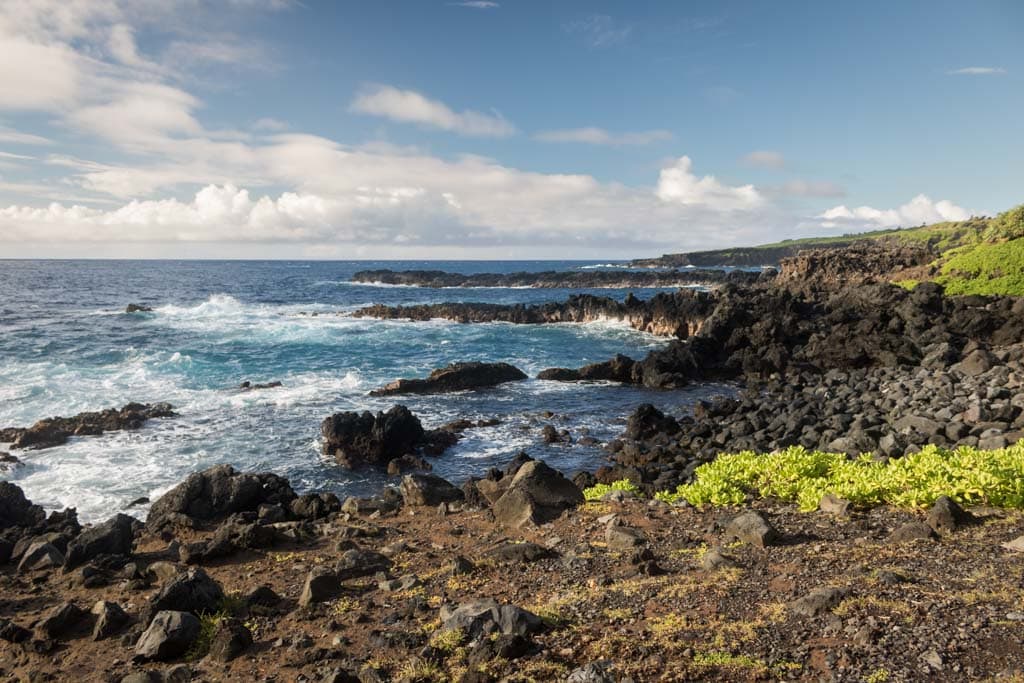
The short and easy Kahakai Trail runs for 0.3 miles from the Kīpahulu Campground to the Kūloa Point Loop Trail.
It runs past archaeological sites and some amazing coastal views. It’s a great spot to watch the sunrise at Kīpahulu.
Admire the Milky Way at Kīpahulu Campground
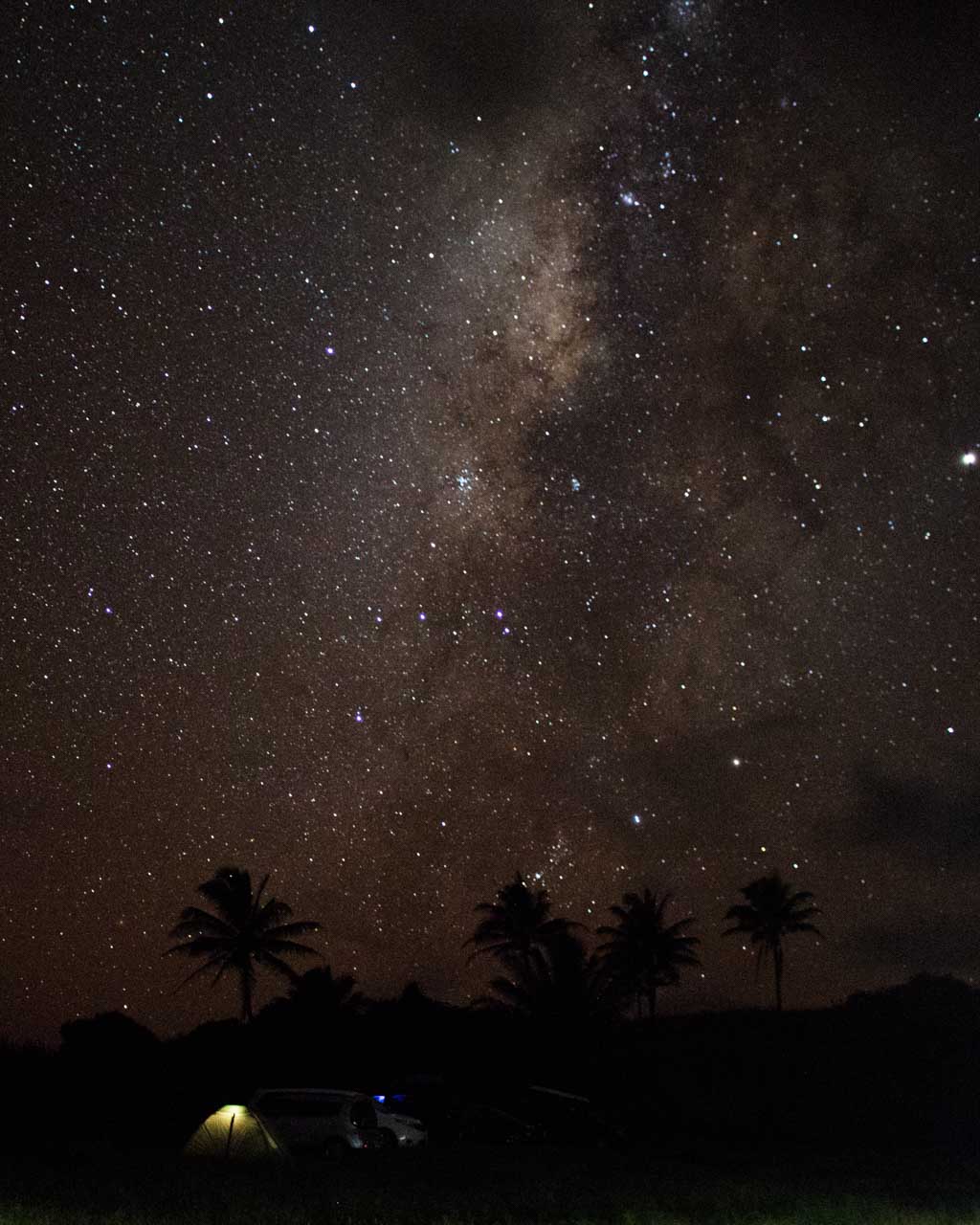
Just like the Summit District, Kīpahulu’s remoteness makes it an ideal place for stargazing.
Set up camp at the Kīpahulu Campground, grab a chair and a cold drink, and look up. You’ll be greeted by one of the most spectacular cosmic displays on Earth.
Road to Hana
The seemingly never-ending Road to Hana winds for 60 miles along and above the northeastern coast of Maui. Featuring over 50 one-lane bridges and more twists and turns than you’ll care for, this is a thrill ride of a drive.
As I said above, this isn’t part of Haleakalā National Park, but it is the only way to get to Kīpahulu. And there’s just no way I wouldn’t mention this sensational road.
There are plenty of attractions on the way, from countless waterfalls and swimming pools to scenic overlooks, roadside juice stands and BBQ joints, jungle scenery and idyllic beaches.
Plan for one whole day to wind your way toward Kīpahulu. It’s impossible to rush this drive and, since this is one of the world’s greatest drives, I encourage you to take your time.
Relax and enjoy, but do pay attention. You’ll know what I mean once you’re actually driving it!
Camping in Haleakala National Park
There are few designated campgrounds in Maui. Almost all of them are in the eastern part of the island, including two Haleakalā National Park campgrounds.
Although the two car campground in Haleakalā don’t have a whole lot of facilities, their awesome location makes them the best option to explore this stunning park in more details. Sites are also pretty cheap in the park, which allows you to keep your Maui travel expenses (which can accumulate pretty quickly) down.
Haleakalā Hosmer Grove Campground
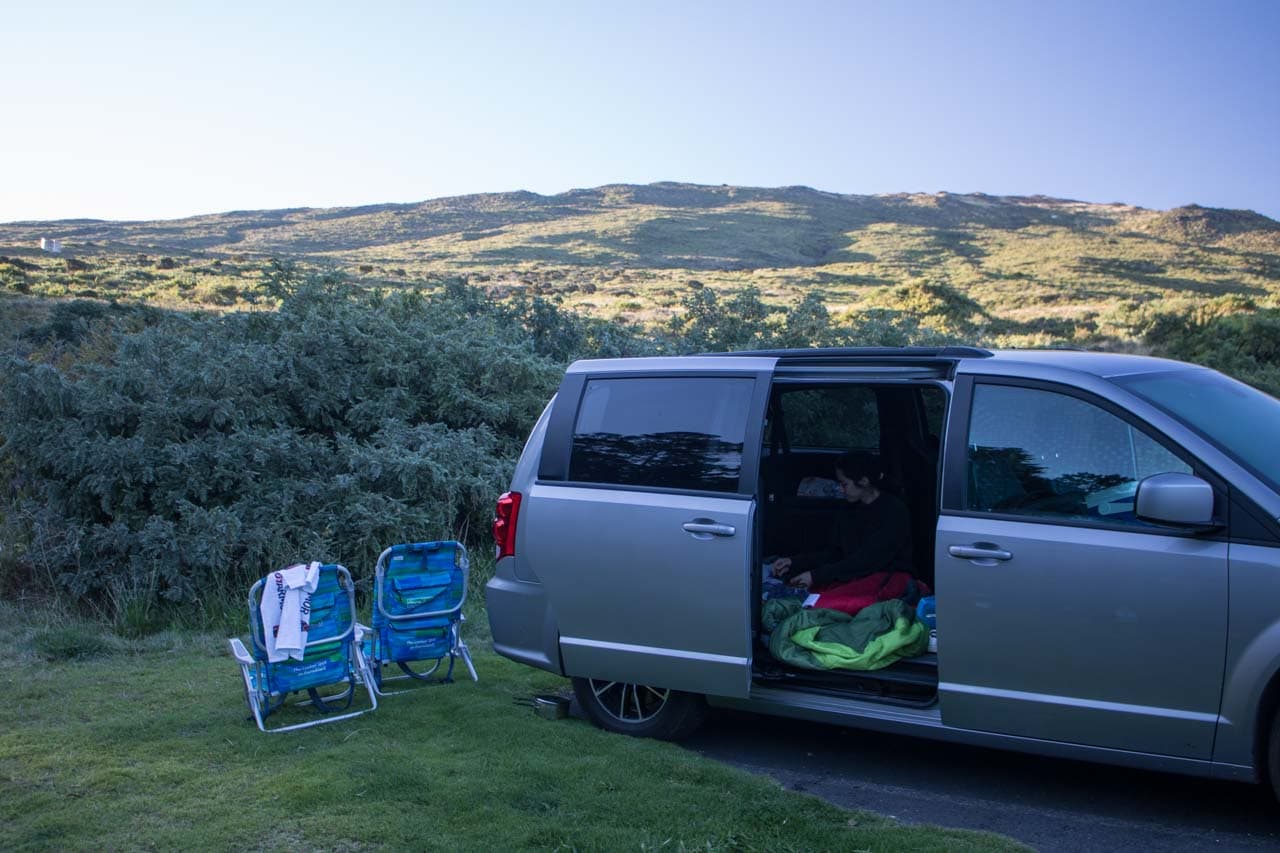
Situated in the cloud belt of the Haleakala Summit, just below the 7,000-feet mark. Nighttime temperatures regularly drop down to about freezing, while daytime highs range between 50 and 65°F (10-18°C). Prepare for cold nights and bring sunscreen for daytime activities at Haleakalā Summit.
Hosmer Grove Campground has room for 50 people, as well as picnic tables, pit toilets, drinking water and barbecues. There’s no food anywhere in the Haleakalā Summit District, so bring everything you need.
Sites are spread out across a small grassy area adjacent to a non-native woodland, the location of the above-mentioned Hosmer Grove Loop Trail. There are a number of parking spaces for vans, too.
You can reserve a site at Hosmer Grove campground in advance on Recreation.gov.
Haleakalā Kīpahulu Campground

The Kipahulu Campground is just south of the Kīpahulu Visitor Center, a half hour south of Hana. Located right to the ocean, you’ll enjoy falling asleep to the lapping of waves against the volcanic shore.
There are pit toilets, some picnic tables and barbecues, but no drinking water. You can, however, get drinking water at the restrooms of the visitor center. Groceries and other supplies are available at two general stores in Hana.
This campground has a limit of 100 people. You can reserve a site on Recreation.gov.
Due to the campground’s location in a humid, tropical coastal area, I strongly recommend preparing for rain, mosquitoes and other bugs, harsh sun and humidity.
Backcountry Camping at Haleakalā
There are also two wilderness campgrounds in Haleakalā National Park—Hōlua and Palikū Campgrounds. Both are inside the Haleakalā crater.
For backpacking trips into the crater, you need a free camping permit, which you can pick up at the Park Headquarters Visitor Center.
You can find lots more information about backcountry camping in the park on the NPS website.
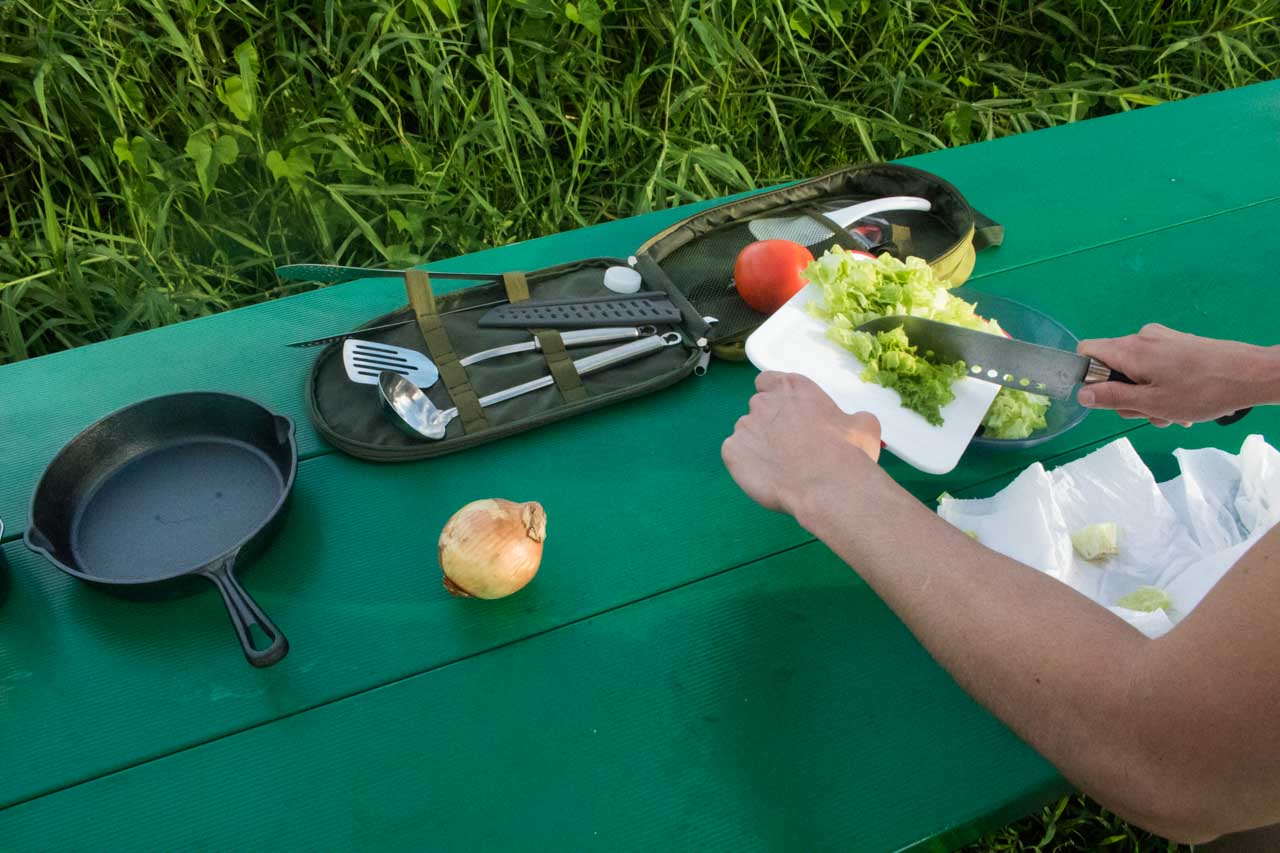
Tip: If you don’t have any camping equipment or don’t want to bring it on the plane with you, there’s another option. You can rent all kinds of gear from Maui Vacation Rentals, including camping gear, beach and snorkeling equipment, and hiking gear.
I rented some camping stuff from them, such as sleeping pads and pillows, camping chairs, and cooking gear, and was grateful for this amazing service! Highly recommended.
Haleakalā National Park FAQs
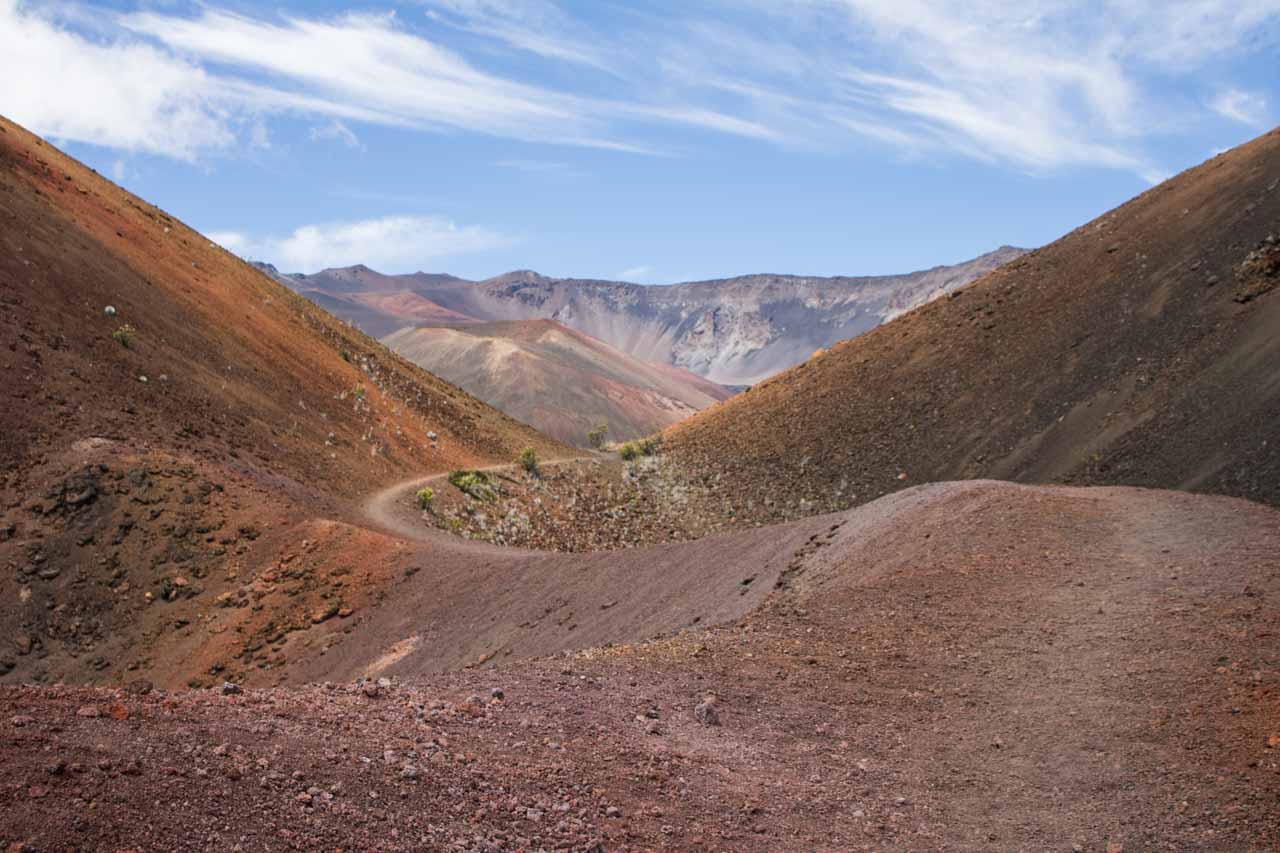
What Is the Distance from Kahului to Haleakalā National Park?
Home to Maui’s main airport and lots of car rental offices, Kahului is where the vast majority of visitors arrive on the island. These are the distances from Kahului to Haleakalā National Park’s two districts with estimated driving times:
- Kahului to Haleakalā Summit: 37 miles (1.5 hours)
- Kahului to Kīpahulu: 60 miles (3-4 hours)
Do I Need Tickets to See the Haleakalā Sunrise?
Yes, you do. The National Park Service requires visitors who drive up to the summit to make a Haleakalā National Park sunrise reservation. This is not the same as paying the entrance fee!
A Haleakalā sunrise reservation doesn’t cost more than $1 per vehicle, but is meant to control the number of vehicles and people in the summit area from 3 a.m. to 7 a.m.
These tickets sell out fast, so I strongly encourage you to book them as soon as you know when you’ll be visiting.
You can read more about the sunrise reservation process here.
How Is the Haleakalā Summit Parking Situation?
Except around sunrise, when all parking lots are basically full, you shouldn’t have trouble finding a parking spot around the Haleakalā Summit.
There’s a fairly large parking area at the Haleakalā Visitor Center, as well as at the Red Hill Summit (also known as Pu’u’ula’ula). The two other summit area parking lots are at the Leleiwi Overlook and the Kalahaku Overlook (which is only accessible while driving downhill).
How Long Does It Take to Drive to the Haleakalā Summit?
What Is the Haleakalā National Park Entrance Fee?
Everyone visiting Haleakalā National Park has to purchase a recreational pass. How much this costs depends on how you enter the park. At the time of writing this article, these are the specific entrance fees:
- Private vehicle: $30
- Motorcycle: $25
- Individual person: $15 (cyclists, pedestrians, hikers,…)
Haleakalā National Park daily passes are valid for 3 days, including the day of purchase.
Tip: If you’re planning on visiting other U.S. national parks, I recommend that you get an America the Beautiful Annual Interagency Pass. Valid for 12 months from the date of purchase, this pass covers access to all National Park Service sites and several other federal recreation areas. It costs $80, but you’ll earn that back after only a few park visits.
What Are the Haleakalā National Park Hours?
Haleakalā National Park is open 24/7, every day of the year, except during closures prompted by severe weather conditions.
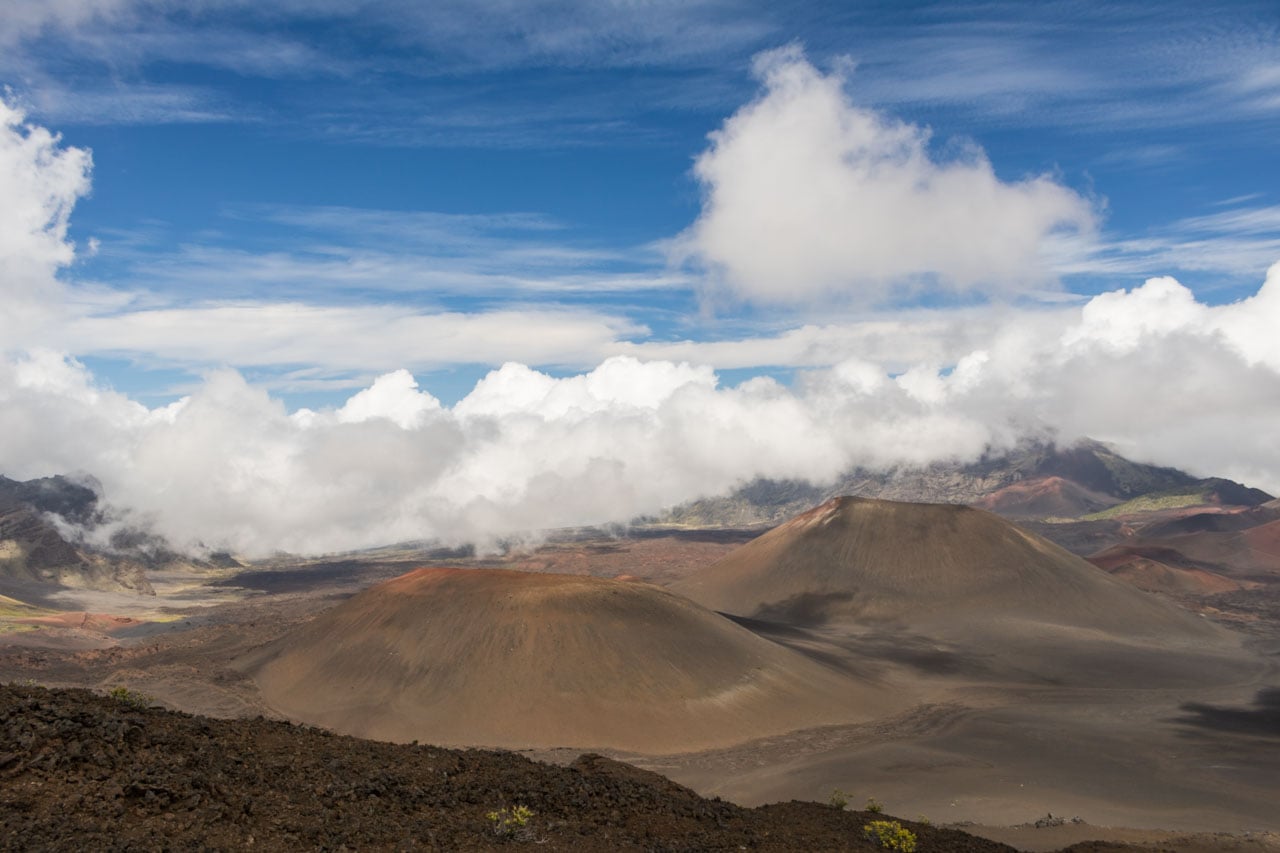
How Many Days Should I Spend in Haleakalā National Park?
Based on my own experience, I suggest spending 3-4 days in Haleakalā National Park.
You’ll need one full day to see and do all Haleakalā National Park Summit activities I’ve discussed above, including a sunrise, day hike, sunset and stargazing. This includes at least one night at the Hosmer Grove Campground.
Including the Road to Hana drive, the Kīpahulu District deserves two more full days. This gives you plenty of time to enjoy the rain forest scenery, do some short hikes, go swimming and spend some time at the peaceful Kīpahulu Campground.



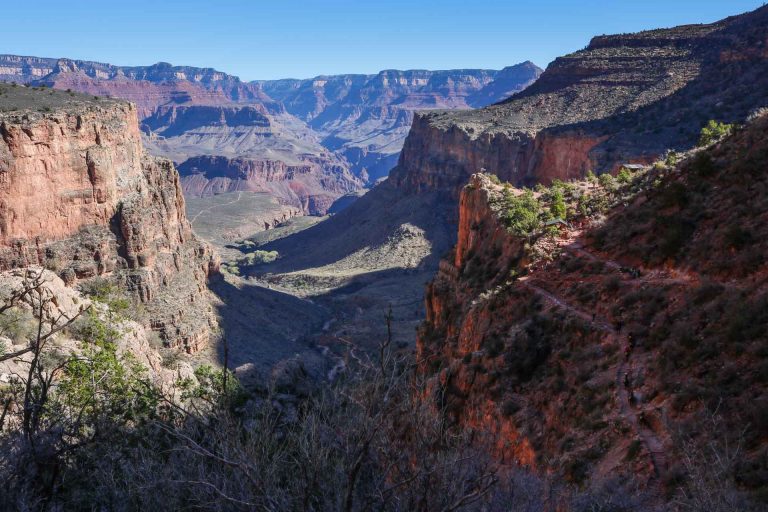



Are you alone in the camp site during night? the place looks scary at night.
No, although both car campgrounds in Haleakala National Park don’t get full, there are always plenty of people around! It’s not scary at all. If anything, it’s beautiful and peaceful.